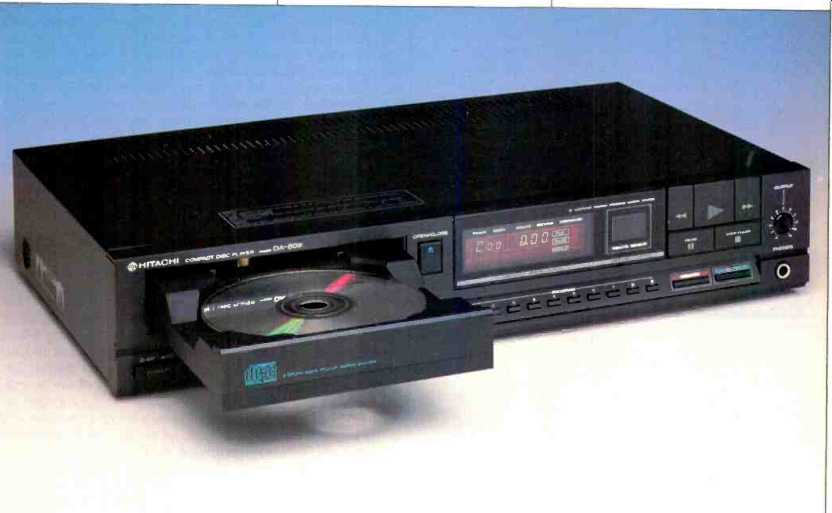
Manufacturer's Specifications:
Chipset: (From DA600_SM. Aug. 1984. dac: PCM53JP-V [ic403]. s/h: hd14053b [ic502/ic506]; uPC4081C [ic503L]; lpf: afl89wb [ic504L]; audio preamp: m5219L [ic505L])
Frequency Response: 5 Hz to 20 kHz, ±0.5 dB. S/N Ratio: 95 dB.
Dynamic Range: 95 dB.
Channel Separation: 92 dB. THD: 0.003% at 1 kHz.
Output Level: 2.5 V, variable.
Number of Programmable Selections: 15.
Power Consumption: 23 watts.
Dimensions: 17 1/8 in. (43.5 cm) W x 3 1/4 in. (8.3 cm) H x 10 3/8 in. (26.4 cm) D.
Weight: 13 lbs., 3 oz. (6 kg).
Price: $700.
Company Address: 401 West Artesia Blvd., Compton, Cal. 90220.
CD players have come a long way since I tested Hitachi's rather boxy-looking first model, the DA-1000, more than two years ago. I did not give it a rave review. In fact, I went through two samples before I got one that worked properly.
How times have changed! This latest Hitachi CD player deserves high marks for performance and features, as well as for style. It allows you to program up to 15 selections in any order, using a numeric keypad. There's an audible fast search mode which helps you find the exact musical moment you want to hear. A repeat-playback feature lets you listen to a specific program over and over again, or you can repeat-play specific tracks. It's even possible to find specific points on a disc by keying in tracks as well as index numbers, if the particular disc has been encoded with such index points. Perhaps best of all, a supplied wireless-remote control lets you handle all player operations except power on/off, drawer open/close, and output-level adjustment from the comfort of your listening location.
According to Hitachi, the low, slim look of the DA-600 was made possible in part by the firm's development of several LSIs which incorporate a great deal of circuitry into a few small chips. Hitachi also stresses that its CD players employ a three-beam laser-optics system for accurate tracking, though I'm not convinced that this approach offers any real advantages over the single-beam laser found in other, equally good players.
Control Layout
Like most latter-day CD players, the DA-600 uses a front loading, retracting drawer that holds the CD to be played.
Below the drawer is the power on/off switch, and to its right is an open/close button. Further to the right is a fluorescent, multi-purpose display which indicates the track and index numbers being played, the time into the track (as well as the total recorded time of the disc just after it is loaded), and the selected mode. "Play," "Repeat," "Pause," "Open," and "Program" lights illuminate at appropriate times to tell you exactly what's happening. When a disc is first loaded, the display shows the total number of tracks on that disc. Below the display area are 10 small numeric keys used for manual track selection or for random-access programming. The "Memory" key for this programming and the "Repeat" key are positioned alongside the numeric keys.
The turntable's amazing versatility of operation is achieved using only five keypads. When used singly, these pads handle play, pause, stop, fast-forward, and fast-reverse functions. The fast-motion buttons, when pressed during play, advance the laser pickup rapidly, allowing you to reach a desired musical moment quickly. If the fast-forward or fast-reverse button is pressed while holding down the play button, the pickup quickly advances to the start of the next track or returns to the beginning of the current one.
The stop button also serves a second function, clearing the program from memory. Doubling the functions of these control pads simplifies the look of this player, making it less intimidating than some others I've encountered that belong to the airplane-cockpit school of control-panel layout. Despite its clean simplicity, the DA-600 offers all of the operating features of those more complicated-looking models.
An output-level control and a stereo headphone jack are at the extreme right end of the front panel. The level control adjusts both line and headphone output levels.
The five major function buttons, the "Repeat" button, and the 10 numeric keys are all duplicated on the wireless remote control, permitting you to remotely program the tracks (and index numbers) you want.
Line outputs for connection to the left and right high-level inputs of a preamplifier, integrated amplifier, or stereo receiver are found on the rear panel.
Measurements
Figure 1 shows the playback frequency response for the left and right channels of this CD player. The vertical scale is 2 dB per division, the better to highlight small deviations from ruler-flat response. There were none to speak of, and, with the cursor of the graph set to read relative output at 20 kHz, the readings were off by only 0.1 and 0.2 dB for the left and right channels! Harmonic distortion at mid-frequencies, for maximum recorded level, measured 0.004%, rising to 0.008% at 10 kHz.
Above that frequency, I ran into the usual apparent increase in THD, caused not by higher order harmonic components but by an out-of-band "beat" between the 44.1-kHz sampling frequency and the frequency read from the test disc.
In Fig. 2, the tall spike represents a desired output at 20 kHz. In this spectrum-analyzer photo, the sweep is linear from 0 Hz to 50 kHz, in 5-kHz horizontal divisions. The 24.1 kHz spike caused by the beat phenomenon is roughly 50 dB below the desired output; you can also see a shorter spike just above 40 kHz in this 'scope photo. Neither of these spikes, of course, is audible, since they are beyond the highest frequency of human hearing.
Figure 3 plots distortion versus frequency for maximum recorded levels as well as for recorded levels of -24 and -30 dB. As usual for CD players, the THD increases at lower output levels. At the 30 dB recorded level, THD for a 1-kHz signal measured 0.06%. Output linearity was accurate to within 0.1 dB down to 60 dB below maximum recorded level, and to within 0.4 dB down to 90 dB below maximum recorded level. Stereo separation, or crosstalk, shown in Fig. 4, was extremely uniform over the entire range of frequencies tested and did not decrease at the frequency extremes, as it does on so many other CD players. This suggests that the analog output stages of the player have been designed with good isolation between left and right output stages.
SMPTE-IM distortion was a low 0.01% at maximum recorded level, increasing to 0.03% at-20 dB recorded level. CCIR (twin-tone) IM, using signals at 19 and 20 kHz, measured only 0.002% at the equivalent of maximum recorded level and 0.0027% at-10 dB. The signal-to-noise ratio, measured without any weighting network, was an impressively high 98.2 dB, increasing to an even more impressive 104 dB when an A-weighting network was introduced in the measurement path. This is one of the best readings I have ever measured for a CD player. An analysis of the noise content as a function of frequency distribution is shown in Figs. 5A and 5B. Square-wave reproduction of a 1-kHz, digitally generated square-wave signal was typical of that produced by CD players using multi-pole analog output filters (Fig. 6), as was the reproduction of the unit pulse (Fig. 7). With a 200-Hz signal reproduced from the left channel and a 2-kHz signal coming from the right channel, there was little evidence of phase shift of the higher frequency with respect to the lower one. Perfect phase relationship would be indicated by both sine waves in Fig. 8 crossing the zero axis in a positive going direction at the same time-a condition that occurs near the right side of this 'scope photo.
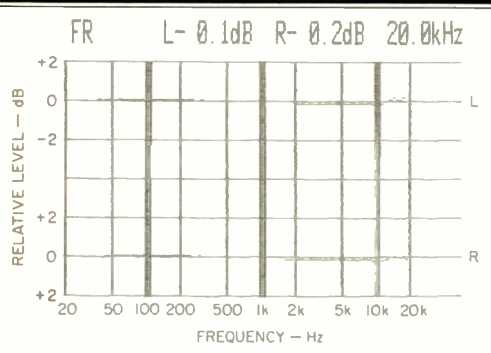
Fig. 1--Frequency response, left (top) and right channels.
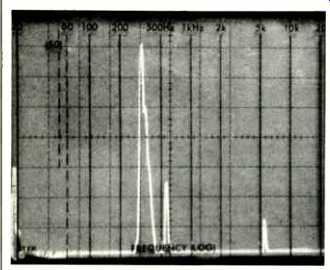
Fig. 2--Spectrum analysis of 20-kHz test signal (large spike) shows inaudible
beat tone at 24.1 kHz, approximately 50 dB below the desired output. Horizontal
scale: Linear, from 0 Hz to 50 kHz.
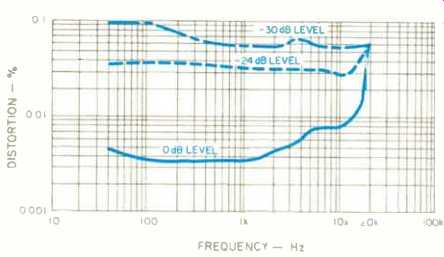
Fig. 3--THD vs. frequency at three output levels.
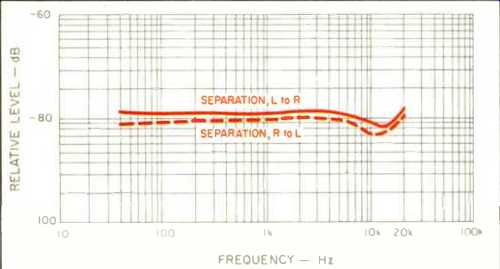
Fig. 4--Separation vs. frequency.
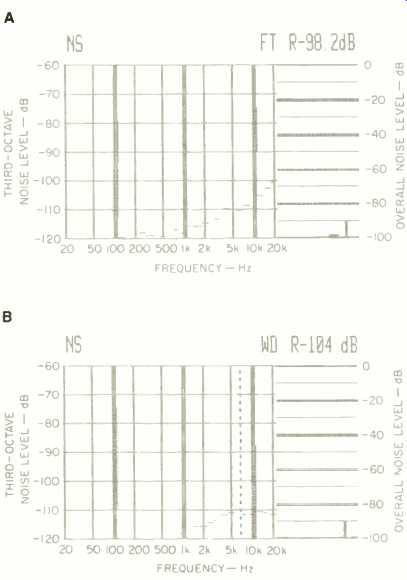
Fig. 5--S/N analysis, both unweighted (A) and A-weighted (B).
Although the Hitachi DA-600 was able to track my special "error-laden" test disc to dropout lengths that exceed the minimum requirement called for in the CD standard (400 microns), it was not able to play through the widest portion (900 microns) of the test disc's opaque wedge, though it did get past the 800-micron point. No trouble was encountered getting through the simulated dust spots (black dots on the test disc's surface), the largest of which is 800 microns in diameter. Nor did the simulated fingerprint present any problems for the DA-600's laser-optical pickup or servo tracking system. Resistance to shock and mechanical vibration was better than average. In general, second- and third-generation CD players have been better in this respect than the first players, and the Hitachi DA-600 is no exception.
Use and Listening Tests
I'm getting to the point where I can usually distinguish between CD players that employ steep analog filters and those that use digital filtering (i.e., oversampling of one form or another plus gentle-sloping analog filters). The Hitachi DA-600 belongs to the former category; as such, it offers sound quality not unlike that delivered by players from Sony, Denon, Sanyo, Technics, Onkyo, and Pioneer. As I have stated on previous occasions, I cannot say with finality that CD players using multi-pole analog filters sound inferior or superior to players employing the alternate D/A configuration. I can say that I hear a difference between these alternate approaches. But more significant is the program source material. Its musical quality determines-to a far greater degree-how natural the reproduced sound seems, and even how appropriate the stereo separation and apparent depth of imaging seem.
I listened long and hard to the Hitachi DA-600, and, given no other frame of reference than my own memory for music performed live, I could not fault its ability to deliver lifelike sound from well-recorded CDs. Circuit-wise, I suspect that the only thing that distinguishes this machine from Hitachi's less-expensive DA-550 is the headphone output and level control feature and the availability of the infrared remote control unit. So, if these features have little importance to you, you may want to consider the lower-cost DA-550 and save yourself an additional $100 or more. In either case, you'll be getting an up-to-date CD player that looks every bit as good as it sounds.
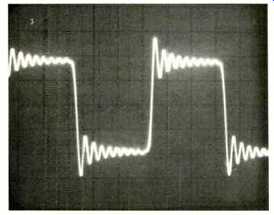
Fig. 6--Reproduction of 1-kHz square wave.
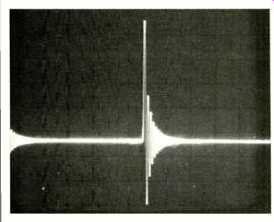
Fig. 7--Single-pulse test.
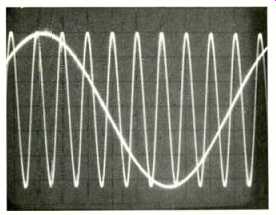
Fig. 8--Phase error check using tones of 200 Hz (left charmed) and 2 kHz (right channel).
-Leonard Feldman
=================
(Audio magazine, Feb. 1985)
Also see:
Hitachi DA-800 Compact Disc Player (May 1984)
Hitachi DA-1000 Digital Audio Disc Player (Jan. 1983)
Hitachi Model SR-2004 Stereo AM/FM Receiver (Nov. 1978)
Digital Domain -- Keeping Your Distance (Feb. 1985)
= = = =